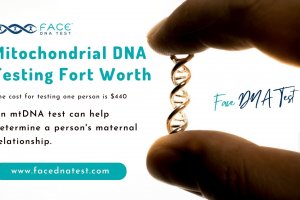It is normal to assume that you and all your biological siblings share the same ancestor but that’s not exactly true since there are chances that children with the same parents might have different ancestry test results.

There are 3 different ways in which you can determine ancestry through DNA testing which are:
- Test for Y-Chromosome – the Y-Chromosome DNA testing is a sex-determining chromosome that is only present in males. The Y-chromosome is passed down from generation to generation in the male line of inheritance. The Y- Y-chromosome is usually used to trace back the paternal ancestry and it can be traced back to 100 and thousands of years however there is a flaw in the system when it comes to determining the paternal ancestry in females since females do not carry this Y-chromosome. Because of this the paternal ancestry of a female is not possible, and can only be guessed if the male relatives of the female get the ancestry test.
- Mitochondrial DNA testing– mitochondrial DNA is found in the mitochondria of a person and is only passed down by a mother to their children without that much change. This DNA test is used to determine the maternal ancestry of a person and can be traced back as far as 200,000 years.
- Autosomal DNA-this represent a person’s genome excluding the sex chromosomes. Autosomal DNA can be used to trace both paternal and maternal ancestors. It can be used to trace back several generations.
If you want to have an Ancestry DNA Testing Denver solely for peace of mind and not for legal reasons, you have the option to collect your DNA at home and send it to the “Ancestry DNA Testing Denver” center for testing. Here, you will also get more options for other DNA tests, including Immigration DNA tests, Paternity, Prenatal, Sibling DNA testing, and many more.
How to Find Biological Siblings?
With help of home DNA tests, you can now quickly discover actual siblings, especially when you were separated in childhood. Through genetic matching, DNA testing services such as Face DNA Test enable you to connect with family members. By matching someone as a whole or half sibling, you can establish a connection by mutually verifying each other’s identities.
Through DNA matching, individuals split up by adoption can be reunited, siblings split up by divorce can get back together, and you may even find relatives you didn’t realize you had. DNA testing is a valuable tool for locating family members if you’ve ever wondered about possible siblings.
How Genetically Similar are Siblings?
Biological siblings carry on genetic similarities from their biological parents, with an average of fifty percent of their biological makeup being shared. Siblings may, however, share between 35% and 65% of their DNA.
What causes this variation? Not always the same 50%, siblings get half from both parents. Though a single sibling may receive more DNA from their mother, others may receive more from his dad. The genomic deck is also shuffled during conception by chance recombination.
Siblings differ more frequently than you may think from DNA tests, even though they are biologically more comparable than random people.
What is a Biological Sibling?
If two people have at least one parent in common, they are considered biological siblings and can be considered full siblings, half, or step-siblings. The parents of full siblings are the same. Single parents raise half of their siblings. Though they are not genetically linked in any other way, step-siblings share the same biological parent.
You might be surprised to learn that you have biological siblings because of advances in reproductive technology like surrogacy and sperm/egg donation! These newly identified biological links can be found using DNA testing services.
What Happens When Siblings Mate?
It might be challenging to believe, but in remote areas, intentional incest or misunderstanding of the relationship between biological siblings can occasionally result in mating between them regarding biological hazards.
Siblings have a higher chance of hereditary genetic abnormalities in their progeny because of the high DNA shared by them. The chances are low for mild diseases like cystic fibrosis or atrophy of the spinal cord. There is a very small chance of severe disability. Prenatal screening can identify most problems; most can be treated with modern therapy. If such uncommon relationships materialize, DNA testing near me offers information to objectively assess scientific health concerns despite enduring societal taboos. Unfounded anxieties give way to an enlightened perspective.
Choose Clarity with DNA Test
Get Accurate Answers With our Test!.
-
- Accurate
- Quick Result
- Private and Secure
- Affordable

Conclusion
As a result of our shared upbringing and haphazard inheritance, our relationships with our siblings are intricate fabrics instead of set personas. Even while our DNA unites us, our distinctions make us distinct. Our lives are connected to the grand narrative of the family by the ties of our ancestry, no matter how close or far, peaceful or stormy.







1 Comment
Leave your reply.